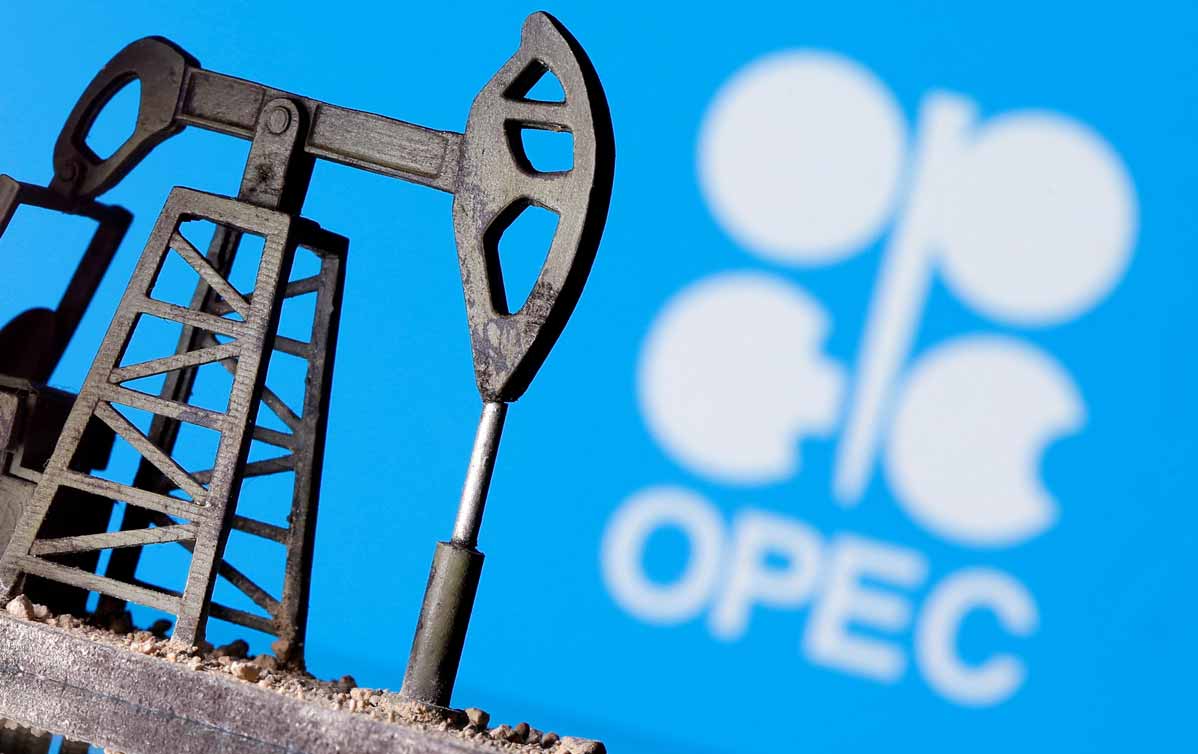Current News:
On June 2, 2023, OPEC and its allies, known as OPEC+, decided to maintain their current production level of 43.2 million barrels per day (bpd) for July and August 2023. This decision disappointed some market participants who were hoping for increased production to alleviate rising oil prices. OPEC+ is cautious about making significant changes to avoid disrupting the delicate global oil market. The decision is likely to keep oil prices elevated in the near term, but if demand weakens, OPEC+ may reconsider its production policy. Key factors influencing the decision include supply disruptions caused by the conflict in Ukraine, rising demand due to global economic recovery, concerns about fueling inflation, and pressure from members to maintain market share.
1.What is the OPEC?
In the intricate web of global energy markets, the decisions made by the Organization of the Petroleum Exporting Countries (OPEC) possess a formidable impact on crude oil prices. OPEC, an intergovernmental organization founded in 1960, comprises major oil-producing nations, including Saudi Arabia, Iran, Iraq, and Venezuela, among others. Renowned for its ability to influence oil markets, OPEC’s decision-making process and subsequent actions are closely observed by economists, traders, and research scientists alike.
The Importance of OPEC’s Decision Making
OPEC’s decision-making prowess rests upon its ability to regulate the supply of crude oil, a pivotal factor that shapes the global energy landscape. By managing production levels, OPEC endeavors to stabilize crude oil prices, ensuring a reasonable balance between supply and demand. Consequently, fluctuations in OPEC’s production quotas can have substantial implications for oil prices, reverberating across various sectors and economies worldwide.
2. OPEC’s Decision-Making Process
The decision-making process of the Organization of the Petroleum Exporting Countries (OPEC) is a multifaceted endeavor that involves the participation of member countries in shaping crucial policies that impact global crude oil markets. By understanding the intricacies of this process, we gain valuable insights into the factors that influence OPEC’s decisions and ultimately shape crude oil prices.
OPEC Member Countries and Decision-Making Structure:
At its core, OPEC consists of diverse member countries, each possessing unique economic and geopolitical interests. The decision-making structure within OPEC is designed to accommodate these divergent perspectives while fostering collaboration. Regular meetings, including the biannual Ordinary Meetings and the Extraordinary Meetings convened when needed, provide a platform for member countries to deliberate and decide on crucial matters affecting oil production and prices.
Factors Influencing OPEC’s Decisions:
OPEC’s decisions are influenced by a variety of factors, both internal and external. Internally, member countries consider their own production capacities, reserve levels, and economic conditions, which influence their positions on production quotas. External factors, such as global economic trends, technological advancements, and geopolitical developments, also shape OPEC’s decision-making process.
Key Meetings and Decision-Making Mechanisms:
OPEC’s decision-making is characterized by a series of key meetings and mechanisms. The Ordinary Meetings, held twice a year, serve as significant platforms for member countries to discuss and negotiate production levels. These meetings facilitate the consensus-building process, allowing OPEC to respond to evolving market conditions promptly. Additionally, the Ministerial Monitoring Committee and the Joint Ministerial Monitoring Committee are instrumental in monitoring compliance with production quotas and recommending necessary adjustments.
By comprehending OPEC’s decision-making process, we gain valuable insights into the organization’s ability to influence crude oil prices. In the subsequent sections, we will explore the impact of OPEC’s decisions on crude oil prices, considering the supply and demand dynamics in the oil market and examining historical examples of OPEC’s influence. Furthermore, we will delve into the economic and geopolitical factors that shape OPEC’s decision making, and discuss the criticisms and challenges faced by the organization. Through this comprehensive analysis, we aim to develop a holistic understanding of OPEC’s role in shaping the global energy landscape.
3. Impact of OPEC’s Decisions on Crude Oil Prices
The decisions made by the Organization of the Petroleum Exporting Countries (OPEC) hold significant sway over the volatile realm of crude oil prices. Understanding the impact of these decisions is crucial for economists, traders, and research scientists seeking to navigate the intricate dynamics of the oil market. In this section, we will explore how OPEC’s decisions reverberate throughout the industry, influencing crude oil prices on a global scale.
Supply and Demand Dynamics in the Oil Market:
OPEC’s decisions have a direct impact on the supply of crude oil, which, in turn, affects the delicate balance between supply and demand. By adjusting production quotas, OPEC can influence the overall availability of oil, thereby influencing prices. When OPEC reduces production, the global supply tightens, resulting in increased prices due to the limited availability of crude oil. Conversely, when OPEC increases production, the market experiences a surplus, leading to downward pressure on prices.
OPEC's Production Quotas and Price Stability:
One of the primary objectives of OPEC is to maintain price stability in the oil market. By setting production quotas, OPEC aims to regulate the supply of crude oil, ensuring it aligns with global demand. When OPEC successfully manages to balance supply and demand through its production quotas, it can help stabilize prices and mitigate excessive volatility. However, if OPEC's decisions result in significant imbalances, it can lead to substantial price fluctuations, impacting various sectors and economies worldwide.
Historical Examples of OPEC's Impact on Prices:
Throughout history, OPEC's decisions have demonstrated their capacity to cause significant shifts in crude oil prices. Notable instances include the 1973 oil crisis, when OPEC implemented an oil embargo, leading to a sharp increase in prices. Similarly, in the early 2000s, OPEC's decision to cut production contributed to a surge in oil prices. These historical examples highlight the influential role played by OPEC in shaping the global oil market and its pricing dynamics.
By comprehending the impact of OPEC's decisions on crude oil prices, market participants can anticipate and adapt to market fluctuations more effectively. In the subsequent sections, we will explore the economic and geopolitical factors that influence OPEC's decision-making process and delve into the criticisms and challenges faced by the organization. Through this comprehensive analysis, we aim to develop a holistic understanding of OPEC's role in shaping the global energy landscape and its impact on crude oil prices.
4. Economic and Geopolitical Factors Influencing OPEC's Decision Making
The decision-making process of the Organization of the Petroleum Exporting Countries (OPEC) is intricately intertwined with a range of economic and geopolitical factors. These factors shape the context within which OPEC operates and influences the organization's decisions regarding oil production and pricing. In this section, we will explore the economic and geopolitical elements that play a pivotal role in influencing OPEC's decision-making process.
Economic Factors:
Economic considerations heavily influence OPEC's decision-making. Member countries assess their individual economic conditions, including production capacities, fiscal requirements, and budgetary needs. Additionally, OPEC as a collective entity evaluates global economic trends, such as GDP growth rates, inflation, and energy demand projections. Economic factors guide OPEC's understanding of market dynamics and play a crucial role in determining production quotas and pricing strategies.
Geopolitical Factors:
Geopolitics, the interplay between politics and geography, significantly impacts OPEC's decision-making. Regional conflicts, tensions, and diplomatic relations among member countries and other major players in the global oil industry can influence OPEC's decisions. Geopolitical considerations encompass issues like security concerns, international alliances, and geopolitical shifts that may affect oil production, transportation, or access to critical resources. OPEC must navigate these complex geopolitical landscapes to make informed decisions that align with the interests of member countries and maintain stability in the oil market.
Interplay between Economic and Geopolitical Factors:
The intricate relationship between economic and geopolitical factors shapes OPEC's decision-making landscape. Economic factors, such as oil prices and market stability, can be influenced by geopolitical events like wars, political unrest, or sanctions. Conversely, geopolitical developments can impact economic factors, such as investment flows, trade agreements, or market access. OPEC must navigate this interplay, recognizing the delicate balance between economic and geopolitical factors to make informed decisions that safeguard the interests of member countries while ensuring stability in the global oil market.
By comprehending the economic and geopolitical factors that influence OPEC's decision making, market participants can gain insights into the complex web of considerations that shape the organization's policies. In the subsequent sections, we will discuss the criticisms and challenges faced by OPEC in its decision-making process and explore the emerging competition from non-OPEC producers. Through this comprehensive analysis, we aim to develop a holistic understanding of OPEC's role in shaping the global energy landscape and the factors that guide its decision-making process.
5. Conclusion
Introduction:
In this comprehensive analysis of the Organization of the Petroleum Exporting Countries (OPEC) and its decision-making process, we have explored the intricate dynamics that influence global crude oil prices. By examining the factors that shape OPEC's decisions, the impact on crude oil prices, and the interplay of economic and geopolitical considerations, we have gained valuable insights into the role of OPEC in the global energy landscape.
Recap of OPEC's Decision-Making Process:
OPEC's decision-making process is characterized by the participation of diverse member countries, engaging in regular meetings to discuss and negotiate production quotas. These meetings serve as platforms for consensus-building and provide the foundation for crucial decisions that shape the oil market.
Impact of OPEC's Decisions on Crude Oil Prices:
OPEC's decisions have a profound impact on crude oil prices. By adjusting production levels, OPEC influences the supply of crude oil, which in turn affects the delicate balance of supply and demand. These fluctuations in supply have direct implications for price stability in the oil market, reverberating across various sectors and economies worldwide.
Future Prospects and Challenges for OPEC's Decision Making:
As OPEC moves forward, it faces both opportunities and challenges. The organization must navigate economic factors such as market volatility and technological advancements, while also addressing geopolitical considerations, including conflicts and alliances. Furthermore, criticisms and challenges from both within and outside OPEC pose ongoing tests for the organization's decision-making processes.
In conclusion, the decisions made by OPEC hold immense significance for the global energy landscape. By understanding the complexities of OPEC's decision-making process and its impact on crude oil prices, market participants can better anticipate and respond to market fluctuations. As the world continues to rely on oil as a vital energy source, the role of OPEC in maintaining stability and balancing supply and demand remains paramount. By analyzing the economic and geopolitical factors at play, we gain a comprehensive understanding of OPEC's decision-making and its far-reaching implications in the global economy.


